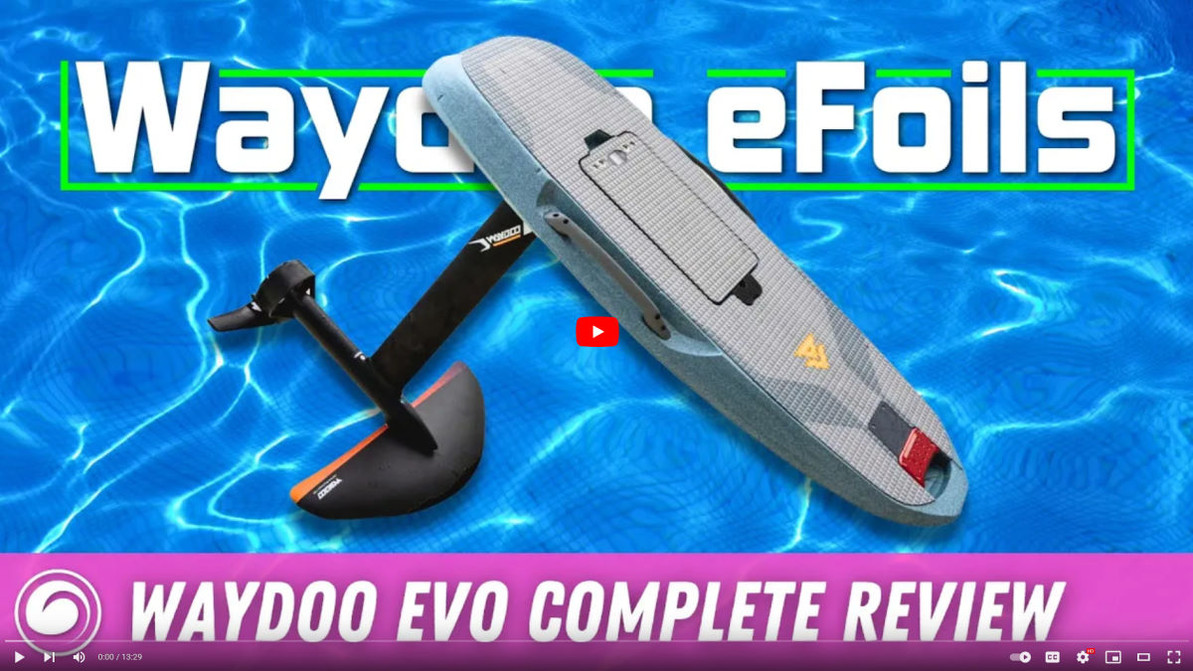Is the Waydoo Evo eFoil Worth the Upgrade? Complete Review and Breakdown
The all-new Waydoo Evo eFoil is here. How is it different from the Flyer One Plus? Does it replace it? What are the configuration options? Jake's spent a lot of time on both the Flyer One Plus and the new Evo, so he's got some answers.
What Are My Options?
The Evo does have a lot of options to customize your ride. Only a few are available right now, but there are more to come later. There will be two battery sizes: a smaller, lighter one and a larger one with extended runtime. There will also be two propulsion units, with one being more powerful for larger riders. You'll be able to choose from two alloy mast sizes, as well as a carbon mast, and a range of wings in fiberglass and carbon.
Finally, you can choose your board. The EPP foam boards will come in two sizes, with each available with or without the sensors and GPS to make riding easier. If your board says "Plus", then it has the sensors. A carbon board will also include the sensors and pairs well with the carbon mast.
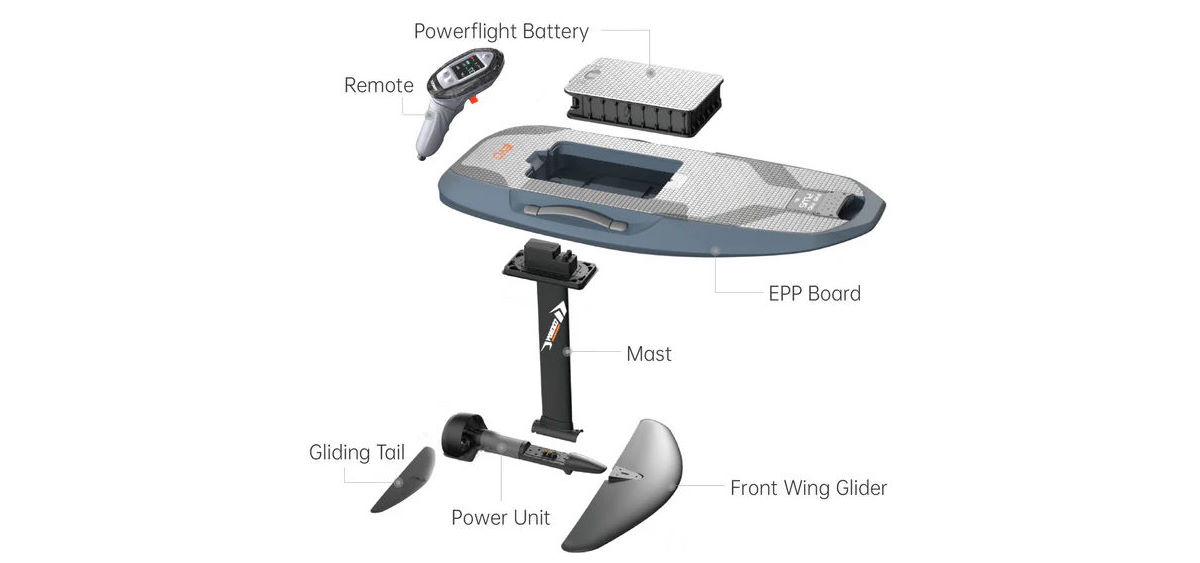
What can I Get Now?
The initial release includes the 90L Pro Plus board, the larger battery, the more powerful propeller, your choice of aluminum mast, and a wing. The crew has absolutely been loving it. It retails for $6399 which, surprisingly, is the same as the Flyer One Plus retailed for.
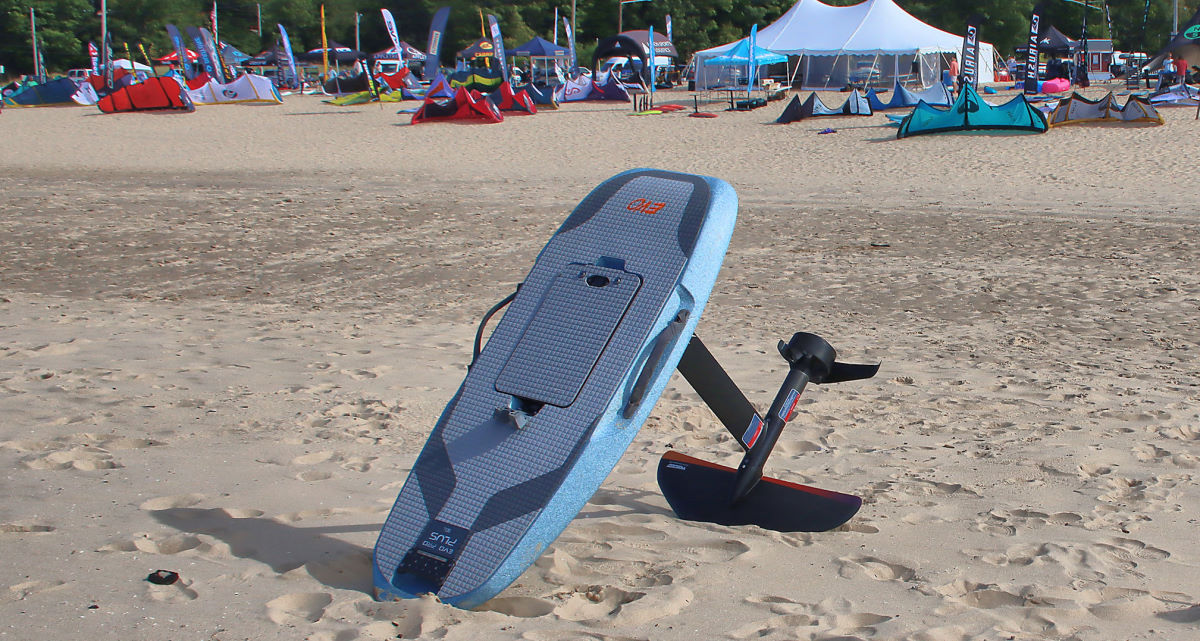
Should I Wait for Some More Options?
The options out now will work well for a wide range of people, but there could be a better combination for you down the line. Here are the features of each option:
Board
The 90L Pro foam board, while a bit trickier to get started with, is a more fun, agile board once you're up and out of the water. The foam is forgiving if it hits you and is more tolerant of dings. It comes with or without the sensors and GPS.
The 130L Max board is the easiest board to learn on, and is the better choice for larger riders as well. It's also a foam board and is the most family-friendly for anyone to hop on and cruise.
The 75L Master board is the smallest and lightest option, being a carbon board. It'll still have the weight of the battery, so temper your expectations accordingly, but it'll be the best option for those looking for a little more performance. It will pair best with the carbon mast, and it only comes in a Plus option.
Standard vs. Plus
The Plus models include a sensor and GPS that will measure your position relative to the water and help keep the board from pitching up and sending you flying. Experienced riders may not use this feature much, but we found that it really made a difference for newer riders. They picked up foiling much more quickly with the sensors on. It makes the sport accessible to all and is definitely worth having if you'll be sharing with a group of people with varying foil comfort levels.
Battery
If you want your board to be lighter, you can sacrifice some time between charges and get the standard battery. The upgraded battery is a bit heavier, but we were getting runtimes of about 90 minutes on it. Lighter riders will even get a little more time than that. We found it to be quite an improvement over the Flyer One Plus, which we tended to get 45 minutes to an hour on.
Mast
The shorter 27 inch alloy mast is perfect for newer or casual riders because it offers more control and stability.
The 35 inch alloy mast is nice if you want to get out in the waves.
If you opt for the carbon board, then you'll probably also want to pick up the 31 inch carbon mast. It'll be a bit lighter and stiffer for a more responsive ride.
Motor
The 4KW standard motor uses less battery power and is perfect for average and lighter riders. Heavier riders or riders who want more performance can upgrade to the 6KW motor. You can feel the low-end torque on it, and it'll reach speeds up to 45 km/hr.
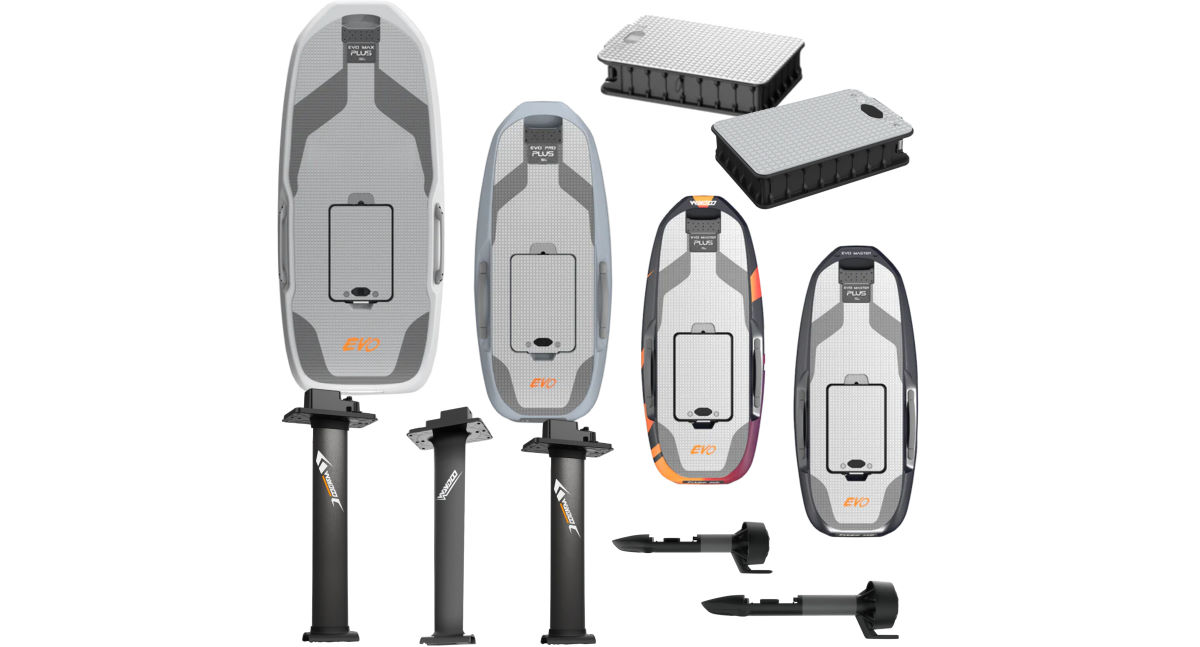
How Does the Evo Compare to the Flyer Plus?
The Evo uses a very similar platform to the Flyer Plus. The mast still plugs directly into the battery which pressure seals against the board, so there isn't a track system. It's fast to assemble, works well, and you don't have to worry about the mast creating any strain on the foam board.
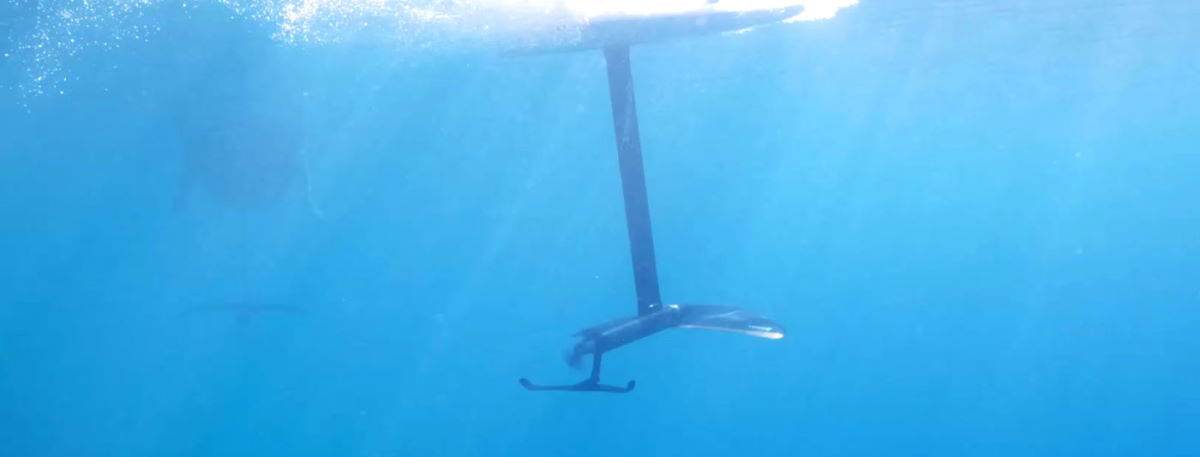
Sticking with foam was, honestly, pretty brilliant. Most eFoilers aren't pushing performance levels to where they need carbon, especially considering that you've still got the weight of the battery no matter what. It's just not a true foilboard where you can get ultra light weights and minimal flex. For most people, upgrading to carbon would be an unnecessary expense. Now, carbon does look nice and is fun to own, but as soon as you bump it against anything hard, like a rock or your vehicle, it's going to get dinged up. Foam is so much more tolerant of abuse because it's going to absorb impacts. Not to mention, it's more forgiving when you fall on it.
While the foam board is heavier than carbon, Waydoo introduced a wheel accessory that'll let you assemble the board at your car, then roll it down to the beach. It's a novel transport system.
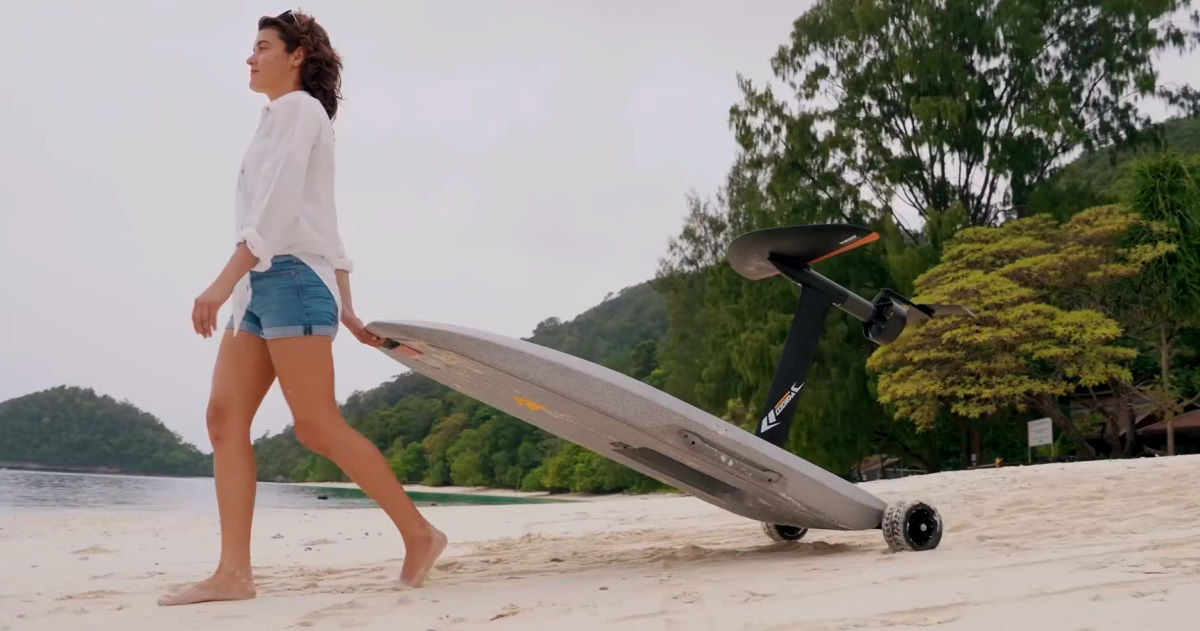
One of the ways that Waydoo was able to upgrade the system, yet keep the price in line with last year's model, was to cut out some of the included accessories, especially since some people may not need them. The Evo comes with a standard charger rather than a fast charger, so it'll take 4 hours to recharge vs. 2. If you need the faster charge, you can still buy the fast charger separately.
The Flyer One Plus had a nice carrying case, and this is now a separate accessory for the Evo. At the shop, we don't use the carrying case because we like to leave the board assembled, so if you've got the room in your vehicle for that, you may want to use that savings toward the wheels.
So while it feels like you're getting less, you're really getting an upgraded experience in exchange for accessories you may or may not use. Not all the accessories are available yet, but as they start to come in you'll be able to customize your board with the things you'll actually find useful.
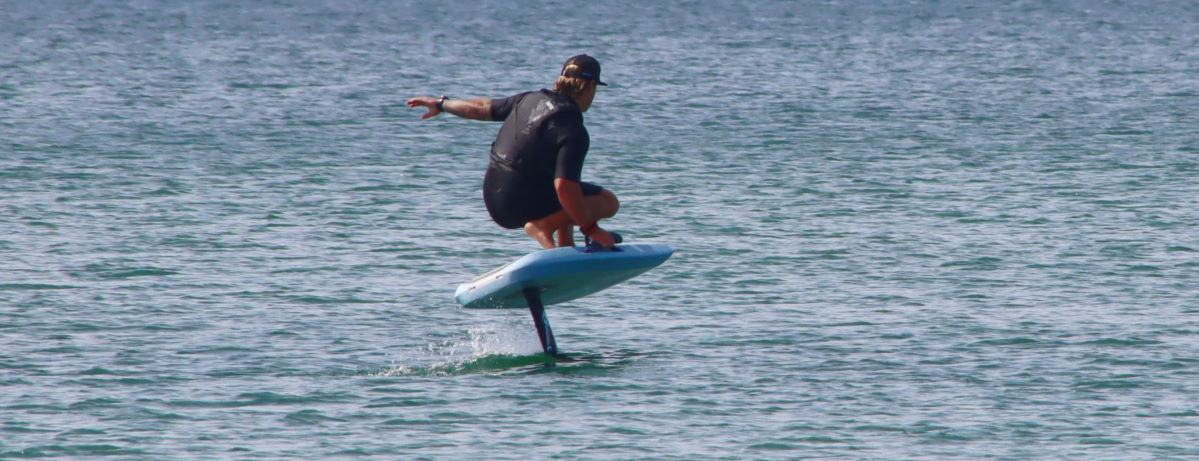
One downside we found with the new performance motor is just how much torque it has. While you're first adjusting to the board or changing speeds, it's quite noticeable. On the Flyer One you could feel the change in speed, but you didn't have to compensate by shifting your body position. On the Evo, you will. It'll become second nature as you get used to it, but at first it'll make you feel a bit less confident and stable on the board.
The 90L board that comes standard with the Evo isn't quite as stable and easy to get up on as the 110L that came with the Flyer One Plus, so if you've ridden the previous model, you'll feel like it's taking a bit more work to get on foil, and you'll feel a bit tippier. However, once you are up, it feels more locked in and is easier to lean into the turns and carve, so overall it's a great change.
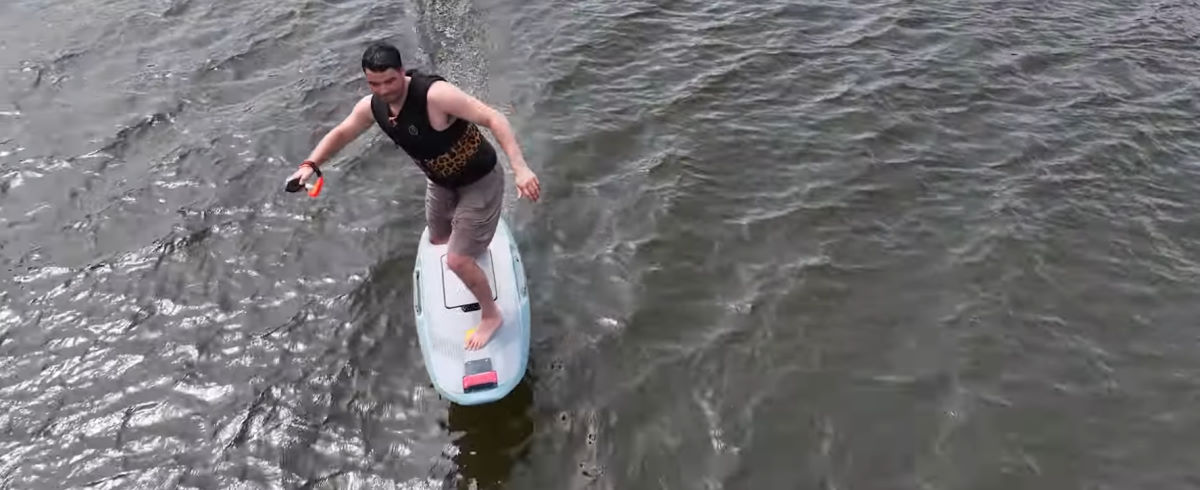
The wings for the Evo are very similar to the Flyer One Plus. There will eventually be a whole range of wings available in fiberglass and carbon to give your ride just the feel you want.
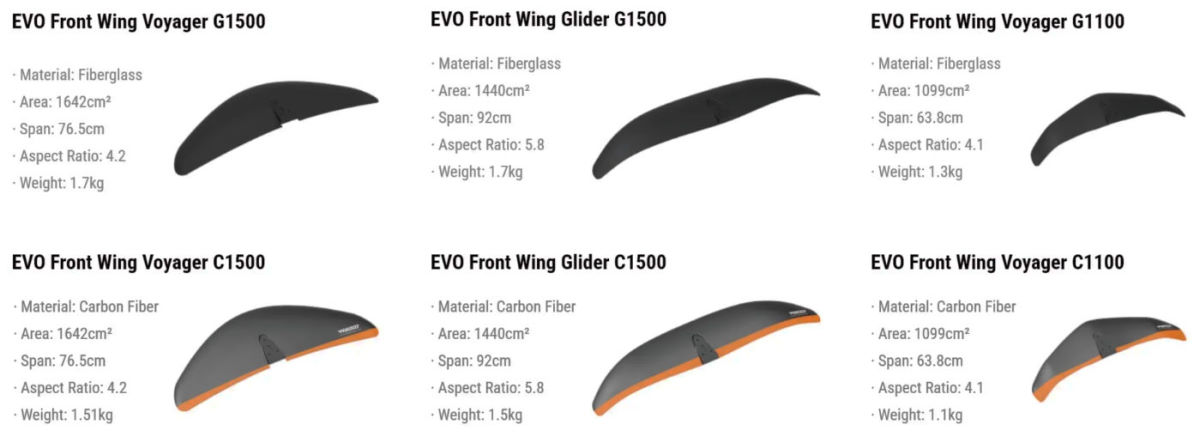
The Evo definitely has more power potential. Jake found himself riding at a lower speed than he would on the Flyer One Plus, as did a lot of the other guys. It almost seemed like there was too much power and torque at times, but some of the smaller, higher-aspect wings may benefit from that. The upcoming propulsion unit for people who can't have exposed props, such as those in Canada, will also likely benefit from the more powerful motor. However, if you're more of a cruiser, the standard motor will be plenty powerful and will save you some money and battery runtime.
A disadvantage that may be addressed in time is that the update process is a bit more involved and time-consuming. Our shop sends out boards that are fully updated, but Waydoo does push out regular updates so you'll need to do it yourself eventually. Just follow the guide and you'll be able to handle it, though. Jake does think that the software will be refined to be more user-friendly, though.
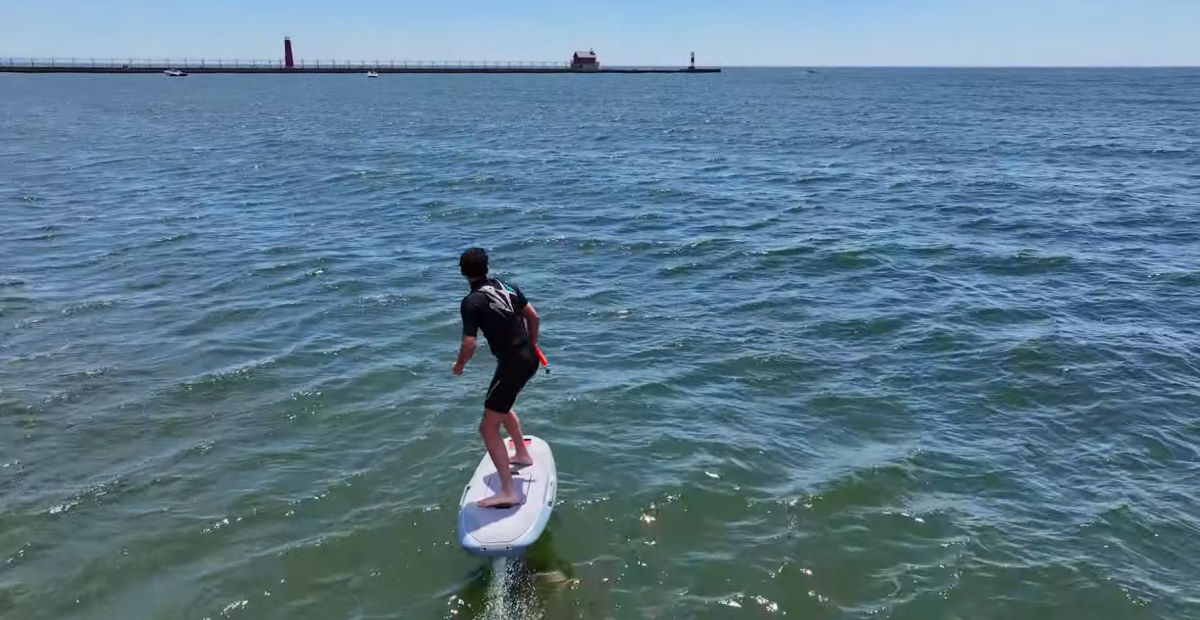
Summary
That's really a small inconvenience for how fun this board is, though. The Evo has more options for customization, more power, and more battery life, so they checked all the boxes. They delivered all this at the same price, which is one of the best on the market, especially for its quality. The Flyer One Plus is still a great ride, but if you want to level up your performance and ride time, the Evo is the ticket. We'll have more on it once the other accessories start becoming available, but the future is looking bright for eFoiling. We'll see you on the water!
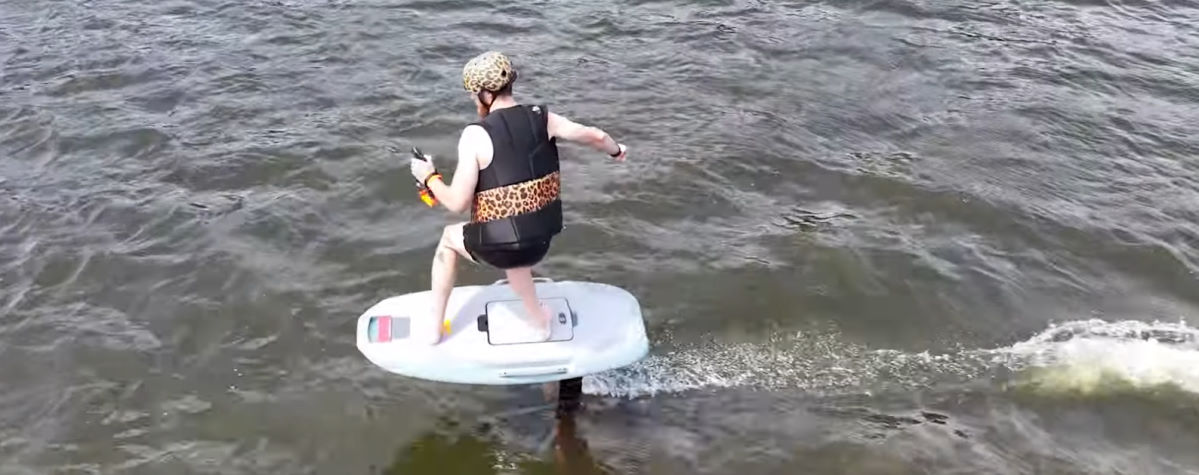
MACkite Subscription Links:
YouTube | Instagram | Spotify Oddcasts
Contact MACkite Below:
800.622.4655 | Kiteboarder@MACkite.com | LIVE Chat Messenger

Recent Posts
-
Light Wind Kiteboarding Magic? The Reedin WhisperModel Might Be the Answer
Jeff from MACkite had a chance to meet up with Kevin Langeree of Reedin in Cape Town, South Afri …22nd Apr 2025 -
Hot New Releases: MACkite Brand Parawing & Mystic Majestic Ex Custom Harness
MACwing v.5 Beta Single Skin Single Use Jake and Ryan from MACkiteboarding unveiled an excit …1st Apr 2025 -
Code Foils 1250R, with Josh Ku and James Casey | Training, Gliding, and Light Wind Downwinding
Introduction: The Rise of the 1250R The Code Foils 1250R is the latest and largest addition to Co …1st Apr 2025

